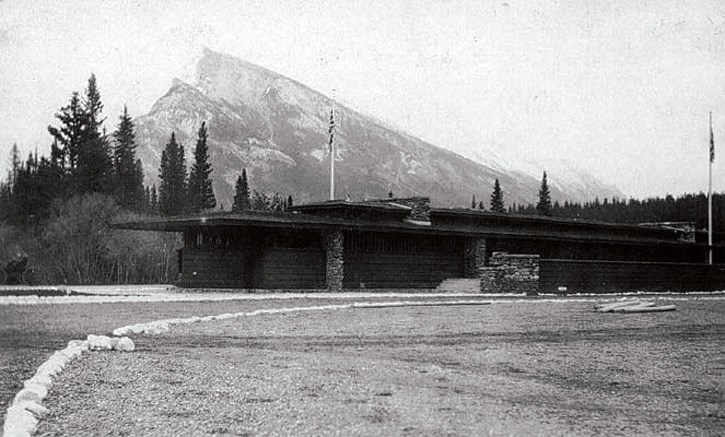A group with plans to build a replica of a demolished pavilion in Banff designed by Frank Lloyd Wright – one of the most famous architects of the 20th Century – is seeking donations for the project.
The Frank Lloyd Wright Revival Initiative, an organization dedicated to the re-building of demolished Wright-designed structures on their original sites, has been trying to fundraise since Banff town council last year gave its support to the project, in principle.
The price tag to build a replica of the pavilion at the Banff recreation grounds, which was demolished in the 1930s, is estimated at between $6 million and $8 million.
“I’d like to extend a personal thank you to each and every one of you who have and continue to make donations to our efforts,” said CEO Michael Miner on the group’s website.
“Please be a part of this historical undertaking by spreading the word and sharing the story.”
In March 2016, town council gave a nod of approval in principle, but said the pavilion must fit within any redevelopment plans for the Banff recreation grounds over the coming years.
It also asked the Frank Lloyd Wright Revival Initiative to conduct a feasibility study and cost analysis for the municipality to better understand the implications of proceeding with the project.
This would include an overview of the scope of the work required to build the structure, an evaluation of site location alternatives and related environmental assessments requirements and estimates of building design and construction costs.
The study is also to include estimated infrastructure improvements required to service the building, long-term operation and maintenance costs, funding and financing sources, program options and an assessment of the economic impact of the project on the community.
Heritage planner Jennifer Laforest said the applicant has been in touch very infrequently.
“We have not received any updates regarding the development proposal,” she said.
Over the course of Wright’s life, he designed and built more than 500 structures, many of which have become icons of design, including The Guggenheim Museum in New York and Fallingwater in Pennsylvania, a house famous for a waterfall built into its design.
The Banff pavilion is considered a beautiful example of Wright’s iconic Prairie School Style and one of only two Wright buildings in Canada. The other is a private cottage in Ontario which still stands.
Wright and Francis Conroy Sullivan, Wright’s only Canadian student, designed the Banff National Park Pavilion in in 1911 at the request of the federal government, at a time when tourism was booming in Banff.
Construction began in 1913 and was finished the following year. Shortly after being finished, it used during the First World War as a quartermaster’s store by the federal defence department.
But flooding between 1920 and 1933 caused structural damage and, with no funds made available for repairs, the pavilion was demolished in 1938. Today, there is no evidence of the original structure.




